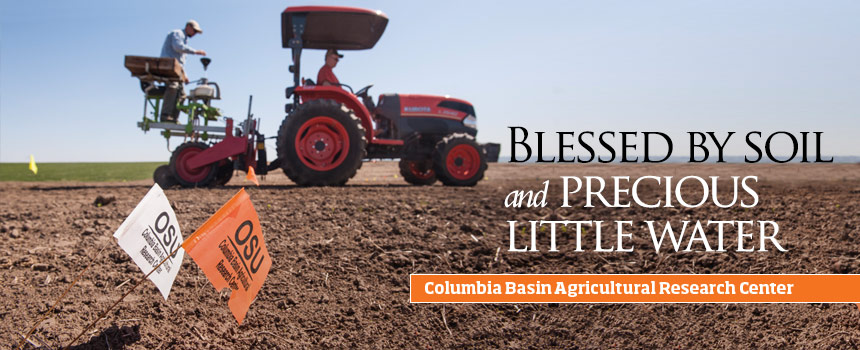OSU separates the wheat from the chaff

It’s a common sight around Oregon in the summer: golden fields of wheat rippling in the breeze. Some of that grain wouldn’t be here if it weren’t for Oregon State University’s research in the Columbia Basin. For decades, OSU has been growing experimental varieties at its farms there as well as on a wheat producer’s field near Pendleton.
[caption caption="Traditional breeding technique uses tweezers, scissors, and hand pollination. (Photo by Lynn Ketchum.)"] [/caption]
[/caption]
Each year, OSU tests about 450 to 500 genetically distinct lines at its farm in Moro and more than 40,000 at the commercial site, said Bob Zemetra, who heads the university’s wheat breeding program. Those lines were created using a painstakingly tedious, old-fashioned breeding technique using tweezers, scissors, and hand pollination at OSU’s Hyslop Farm in Corvallis. It can take more than 10 years for one of those genetic crosses to make it into a cake or cookie.
With the aim of helping farmers maximize profits, Zemetra and his team create high-yielding, disease-resistant varieties that are adapted to Oregon’s diverse growing conditions. They keep an eye out for ones with superior milling and baking qualities. Over the years, OSU scientists have created high-yielding Tubbs and Tubbs 06; ORCF-101, and ORCF-102, which were bred to resist a specific herbicide; and Stephens, which was Oregon’s most widely planted wheat from 1979 to 2009, according to the National Agricultural Statistics Service. In the last couple of years, OSU has developed Kaseberg and Ladd for baking, as well as high-yielders Rosalyn and Bobtail.
The work is paying off. Oregon’s farmers planted more than 721,000 acres of soft white winter wheat in fall 2012, according to the Oregon Wheat Commission. OSU’s varieties made up more than 80 percent of that, it said. ORCF-101 accounted for half of the state’s soft white winter wheat that was planted that fall, making it the leading variety.

 [/caption]
[/caption]